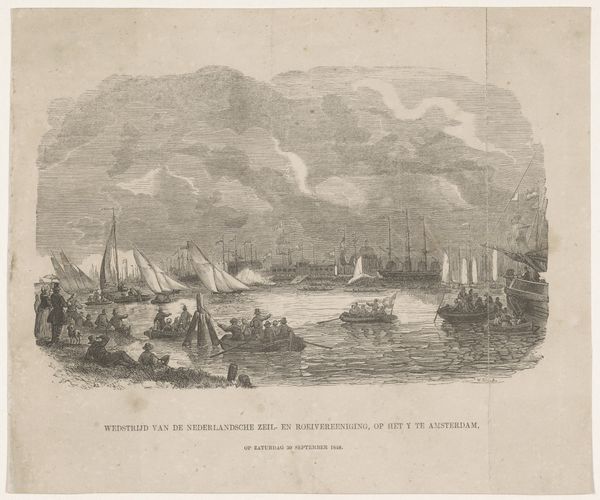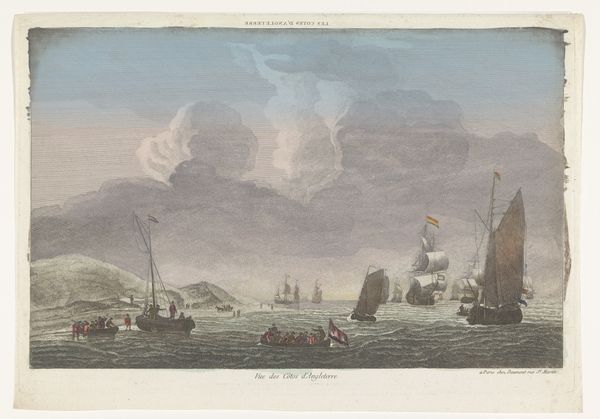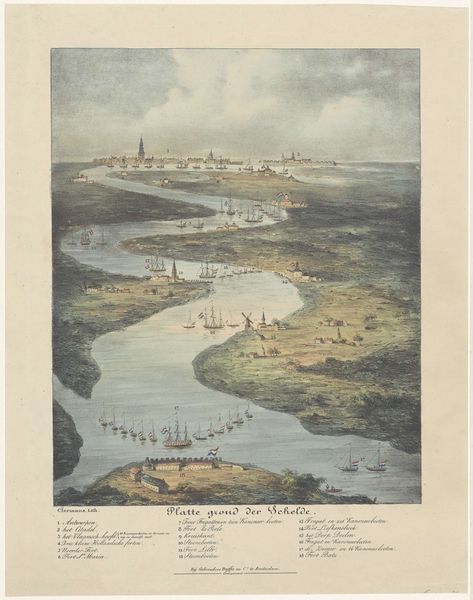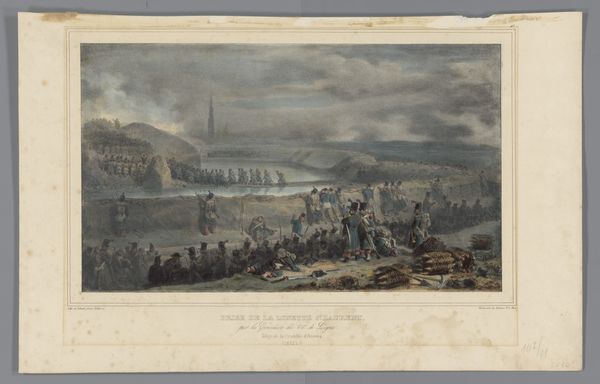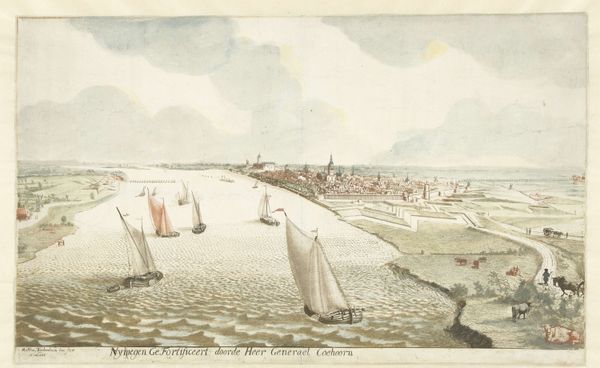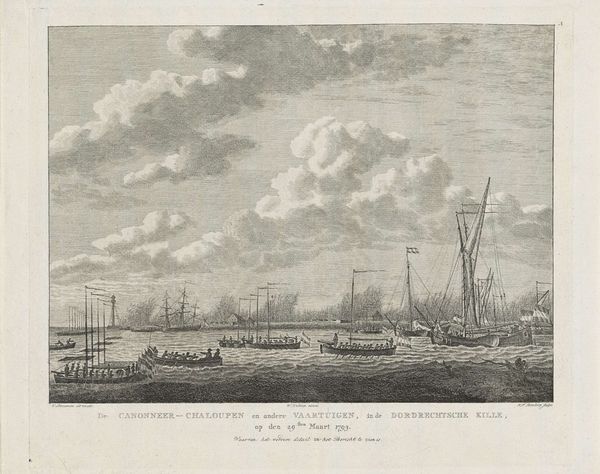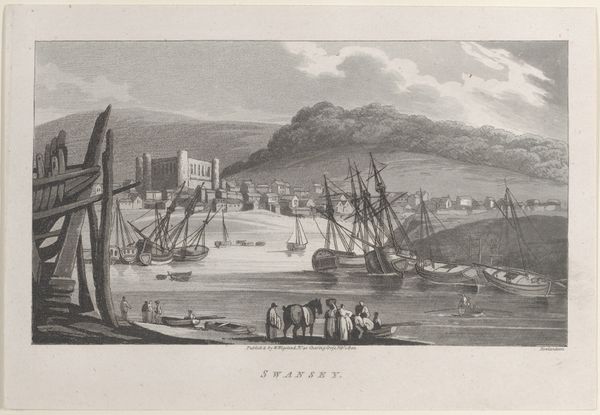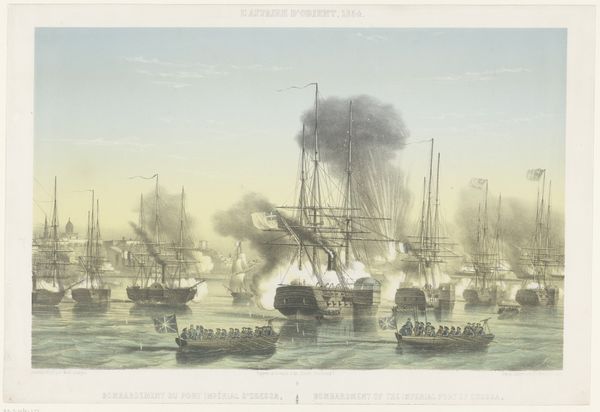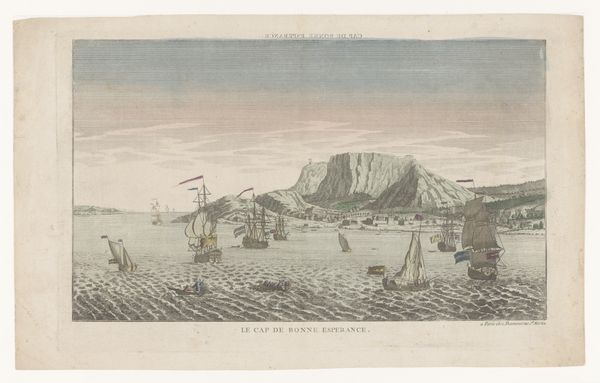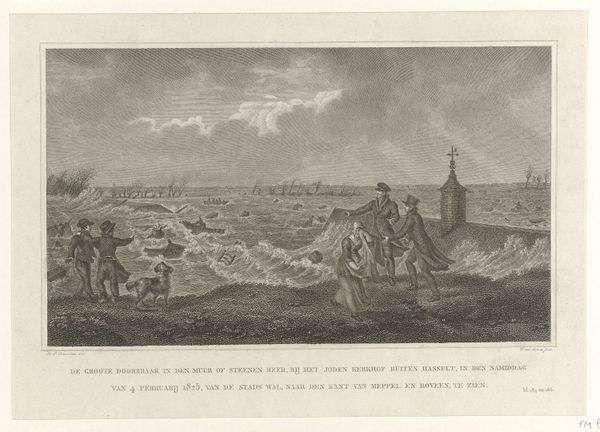
The Empire City, Birdseye View of New York and Environs 1855
0:00
0:00
drawing, lithograph, print
#
drawing
#
boat
#
lithograph
# print
#
landscape
#
perspective
#
hudson-river-school
#
cityscape
#
watercolour illustration
#
watercolor
Dimensions: sheet: 28 1/8 x 38 1/4 in. (71.5 x 97.1 cm) image: 23 1/4 x 33 7/8 in. (59.1 x 86 cm)
Copyright: Public Domain
Editor: This is "The Empire City, Birdseye View of New York and Environs," a lithograph by John Bachmann from 1855. It's amazing how detailed it is for such a large view of the city. What strikes me is the depiction of movement and progress; there's so much shipping traffic. What else do you see in this piece? Curator: It’s more than just ships bustling in the harbor, isn't it? Look at the title: "Empire City." This print appeared during a time when New York was solidifying its position as a center of commerce and immigration. These "bird's-eye views" became incredibly popular. How do you think this perspective affected the perception of New York at the time? Editor: It gives a sense of control, almost like taming the landscape. Showing all those streets laid out neatly… everything seems planned and orderly, despite the energy it depicts. It also almost presents the viewer as all-powerful, seeing everything from above. Curator: Exactly! And it projects this idea to a wider audience. Consider who was buying these prints. Often merchants, landowners, those with a stake in the growth of the city, or those who simply wanted to proclaim New York’s success. Do you think the artist would take artistic license for an accurate depiction of the city for propagandistic purpose? Editor: I think some artistic license would be needed, certainly. It might have been a matter of showing the potential for order and development as much as the reality on the ground at that specific time. Curator: And, therefore, promoting investment in that vision. These weren't just landscape views; they were promotional tools. They shaped public perception, constructing a narrative of New York as a modern, thriving, and manageable space. Editor: I hadn't really considered it that way. It’s interesting how an image could serve so many purposes beyond just documenting a scene. Thanks for clarifying all of this! Curator: My pleasure. Thinking about the purpose, production and audience, these works show us the important intersection of art, commerce and the very formation of New York’s identity.
Comments
No comments
Be the first to comment and join the conversation on the ultimate creative platform.
